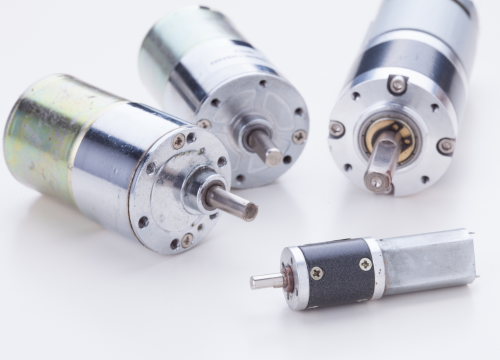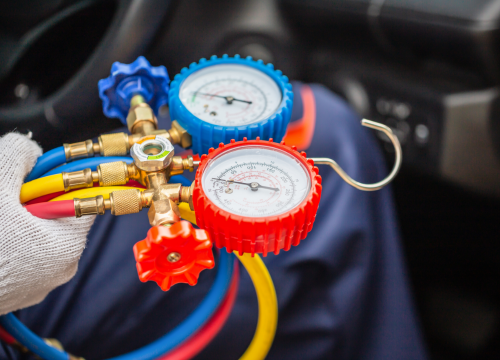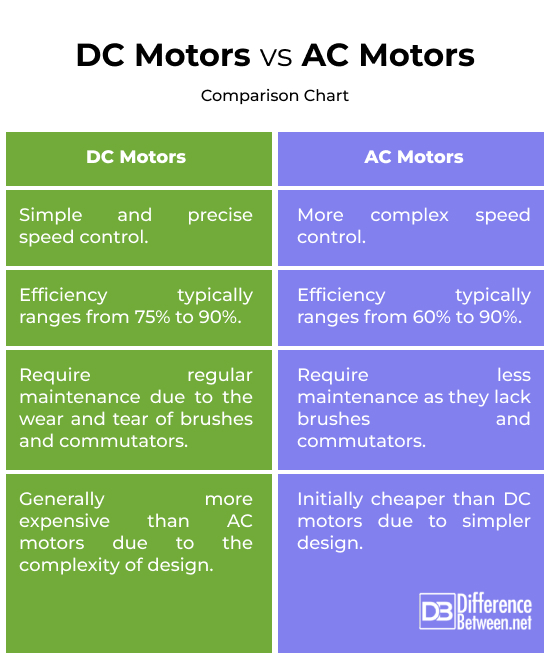Difference Between DC and AC Motors
There are two main categories of electric motors, DC motors and AC motors, distinguished by the power source they employ. In the past, DC motors were the go-to for controlling both speed and position. Alternatively, induction motors have found extensive use in a variety of general-purpose constant-speed contexts.
First, we’ll compare and contrast AC motors with DC motors, two quite different types of motors.

DC Motor
Direct current (DC) motors are electric rotating machines that convert DC into mechanical energy. These motors are able to spin because they convert AC power into mechanical energy, often known as mechanical work. Their operation is predicated on the principle of electromagnetic induction. An electric current is applied to a coil, which is then put in a magnetic field, to form a rotating armature.
Electric cars, household appliances, robots, and industrial machinery are just a few of the numerous uses for direct current motors.
Typically, DC motors can be categorized into two main types:
In brushed motors, the rotor is propelled by a magnetic field that is generated by brushes and a commutator, which changes the direction of current flow in the armature.
In place of brushes and a commutator, brushless DC motors (BLDC) use electronic commutation. They save you time and effort and don’t need fixing as often.

AC Motor
In order to transform electrical energy into mechanical energy, alternating current (AC) motors rely on the principle of electromagnetic induction. These motors are powered by alternating current. The rotor of a motor is turned by means of a revolving magnetic field produced by the bidirectional switching of electric current in the coils of the motor.
There are two main categories of AC motors:
- Synchronous motors: These motors rotate at a constant speed, synchronized with the frequency of the AC power supply.
- Asynchronous motors: These motors do not rotate at a fixed speed; the rotor’s movement cannot be synchronized with the motion of the stator field.
Asynchronous motors are further subdivided into induction motors with one or three phases. Air conditioners, fans, pumps, compressors, conveyor systems, and many more equipment rely on alternating current motors.
Difference between DC and AC Motors
Managing Velocity
Controlling the speed of a DC motor is easy and accurate. Switching up the power going to the motor accomplishes the job. It works wonderfully with robots, fans, and power tools, all of which need varied speeds.
You may alter the speed of an AC motor by adjusting the frequency of the power source. Speed control in three-phase motors is intrinsic to the design, however in single-phase motors, devices such as variable frequency drives (VFDs) are needed.
Effectiveness
The absence of slip (the disparity between the synchronous and real speeds) and reduced energy losses make DC motors inherently more efficient. About 75% to 90% is the usual efficiency range.
Because of losses in induction current and slip, the efficiency of AC motors could be marginally reduced. Efficiency is higher with three-phase motors compared to single-phase ones. About 60% to 90% is the usual efficiency range.
Maintenance
The brushes and commutators in DC motors wear down over time, thus they need to be serviced often. Brushes generate sparks and friction, necessitating regular cleaning and replacement.
Because they don’t need brushes and commutators, AC motors usually don’t need as much maintenance. But bearings and other parts still require inspections on a regular basis.
Initial Velocity
DC motors are ideal for tasks requiring a large amount of initial power, such as starting from a stop or lifting heavy objects, due to their strong starting torque.
Because of their limited starting torque, single-phase motors necessitate supplementary starting devices. The starting torque of three-phase motors is better than that of DC motors, although it is still lower.
DC Motors vs. AC Motors: Comparison Chart

Summary
Unlike DC motors that rotate due to the force between two stationary magnetic fields, AC motors use the force between two rotating magnetic fields. AC motors are often the economical choice when it comes to high-power applications or applications that demand consistent speed and load requirements.
FAQs
Which is better, a DC motor or an AC motor?
DC motors are efficient because there’s no slip or induction current loss, but they require more maintenance. AC motors, on the other hand, require less maintenance due to the absence of brushes and commutators.
Why are AC motors used instead of DC?
AC motors are easier and cheaper to maintain, and they don’t have brushes, meaning no energy loss.
What is the disadvantage of DC motors over AC motors?
DC motors require more maintenance because of their high initial cost and more complicated motor speed controllers.
Can a DC motor run on AC?
No, not directly. You’d need a converter to change the AC to DC first.
Are Tesla motors AC or DC?
Tesla motors use AC motors with advanced controls for precise speed and power delivery.
Do DC motors last longer than AC motors?
Both types can last a long time with proper care. Brushless DC motors require less maintenance and have a longer lifespan compared to their brushed counterparts.
Do electric cars use AC or DC motors?
Motors typically use AC for efficiency and power. Batteries store DC electricity.
Why can’t we use AC instead of DC?
Although AC is more efficient, it’s equally dangerous. AC is often preferred for long-distance power transmission due to its ability to change voltage levels efficiently.
- Difference Between Caucus and Primary - June 18, 2024
- Difference Between PPO and POS - May 30, 2024
- Difference Between RFID and NFC - May 28, 2024
Search DifferenceBetween.net :
10 Comments
Leave a Response
References :
[0]Image credit: https://www.canva.com/photos/MADAKtRHqXo-dc-motor/
[1]Image credit: https://www.canva.com/photos/MAFkQfFOy4w-technician-check-car-air-conditioning-system-refrigerant-recharg/
[2]Gottlieb, Irving. Practical Electric Motor Handbook. Elsevier, 1997.
[3]Kim, Sang-Hoon. Electric Motor Control: DC, AC, and BLDC Motors. Elsevier, 2017.
[4]Deshpande, M.V. Electric Motors: Application And Control. PHI Learning Private Limited, 2010.

I appreciate google for they assistance in geting answers to my question.tnx so much.google.com.am grateful.
pls i want more informations based on electric motors,principle of operations,great differences bw ac and dc motors
Thank q
dear all
i want know the what MAIN defferent between DC motor and AC Motor
am not asking comparing both want to know Main defferent b/w AC & DC Motor
Thanks a lot for sharing this information
thanks for this information
thanks for the information
YANNA IDHU
I found your blog to be very informative and interesting. Looking forward to reading more from you. I finally decided to write a comment on your blog. I just wanted to say good job.